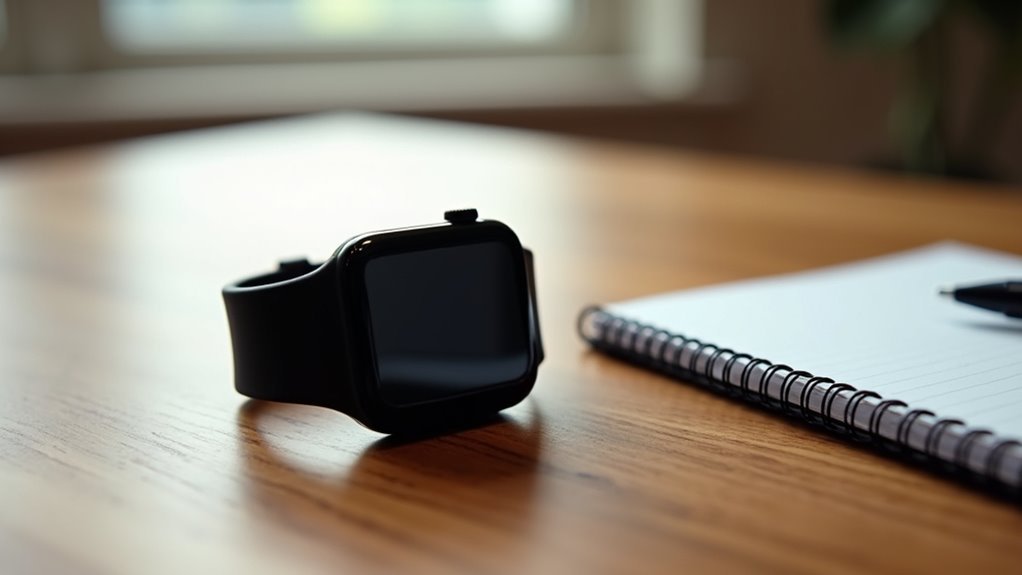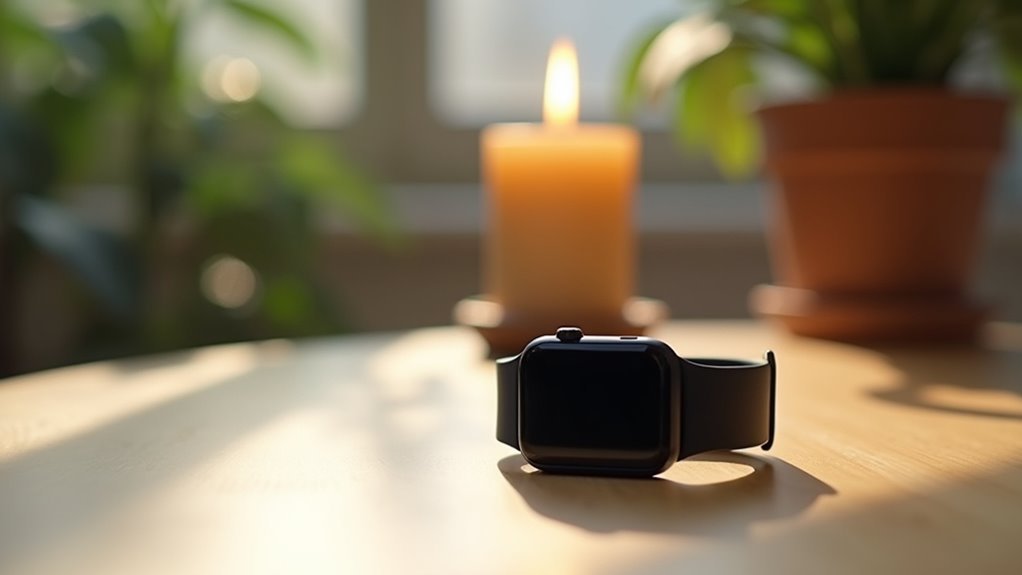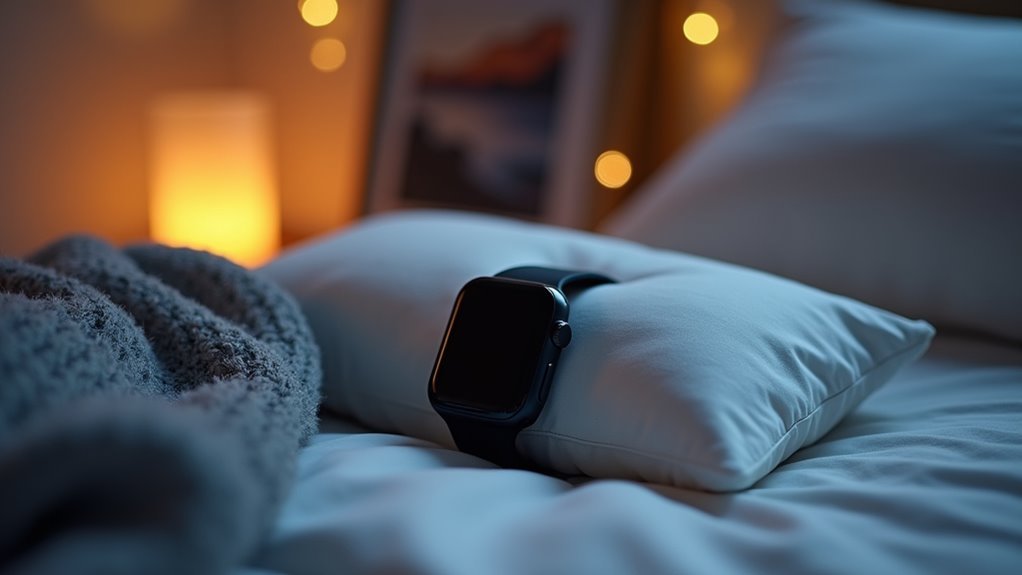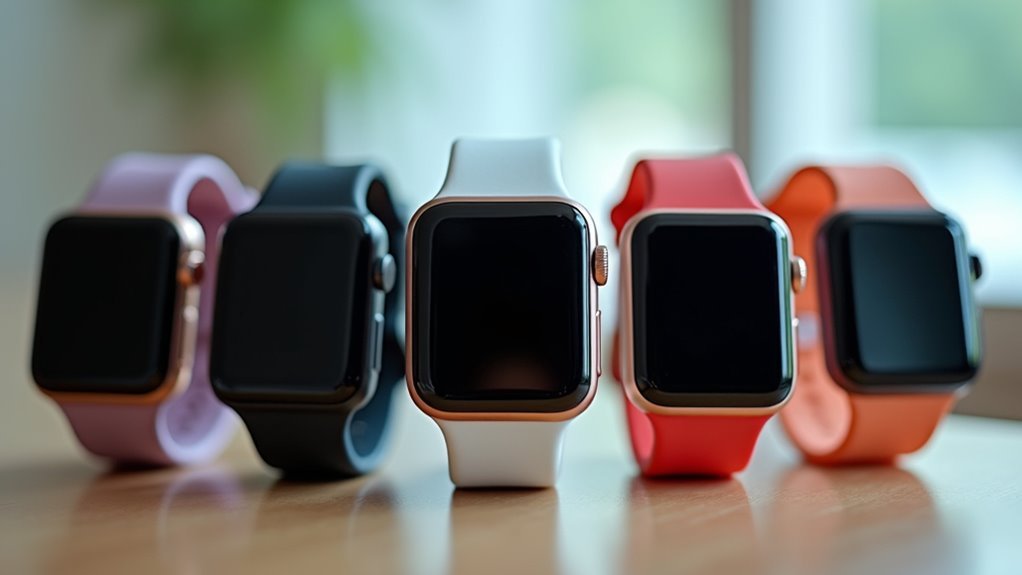You’ll maximize your daily stress tracking reports by implementing three essential strategies. First, set up automated data collection using smart wearables for continuous heart rate variability monitoring throughout exercise, sleep, and rest periods. Second, establish personalized stress thresholds with yellow and red zones that adapt to your unique physiological patterns through machine learning refinement. Third, analyze weekly trends by integrating physiological data with sleep metrics to identify deeper stress patterns and recovery effectiveness, enabling you to discover targeted interventions for enhanced resilience.
Set Up Automated Data Collection for Continuous Heart Rate Variability Monitoring

When you’re tracking stress levels daily, setting up automated heart rate variability (HRV) monitoring eliminates the guesswork and human error that comes with manual data collection.
Smart wearables provide continuous, long-term HRV monitoring that captures extensive datasets during exercise, sleep, and rest. Most consumer wearables can track RR intervals and calculate HRV metrics automatically, giving you greater data volume and situational context compared to traditional medical devices.
Automated collection synchronizes heart rate data with timestamps and activity labels while minimizing user intervention. This approach improves data integrity and enables real-time analysis that can trigger alerts. Continuous monitoring avoids bias from intermittent sampling and provides a more accurate assessment of cardiovascular health.
You’ll establish personalized baselines and detect subtle shifts in autonomic nervous system activity before overt stress symptoms arise, supporting proactive stress management strategies.
Customize Real-Time Alert Thresholds Based on Your Personal Stress Patterns
Since your stress patterns are unique to your lifestyle and physiology, you’ll need to establish personalized baseline thresholds that reflect your individual stress signature rather than relying on generic default settings.
Start by collecting several days of initial data to capture your typical physiological and behavioral patterns. Use machine learning models to refine these baselines by accounting for contextual variables like time of day, activity levels, and external events.
Implement multi-level thresholds—low, medium, and high—that capture gradual stress increases before reaching critical states. Configure your monitoring system with yellow and red zones that indicate when performance thresholds are crossed, ensuring timely detection of stress escalation. Incorporate environmental factors such as work schedules, sleep quality, and user-reported events like meetings or deadlines.
Recalibrate your thresholds periodically to adapt to lifestyle changes, preventing outdated alerts and reducing false positives while maintaining accurate stress detection.
Analyze Weekly Trends Using Physiological Data and Sleep Metrics Integration

While daily stress tracking provides immediate insights, examining your physiological data and sleep patterns over weekly periods reveals deeper connections that single-day snapshots can’t capture. You’ll discover how poor sleep quality amplifies your stress responses and identify recurring patterns that inform personalized management strategies.
| Metric Category | Weekly Analysis Benefit |
|---|---|
| Heart Rate Variability | Reveals stress resilience patterns |
| Sleep Quality Score | Shows recovery effectiveness |
| Cortisol Patterns | Identifies chronic stress markers |
| Blood Pressure Trends | Tracks cardiovascular stress impact |
| Sleep Consistency | Highlights stress management correlation |
Combine your physiological markers with sleep metrics to understand how rest affects your stress reactivity. This longitudinal approach helps you recognize event-based stress triggers and develop targeted interventions that improve your overall resilience. Research has shown that monitoring physiological indicators like skin temperature can effectively reveal stress levels, as decreased temperature readings typically correlate with increased stress exposure.
Frequently Asked Questions
How Accurate Are Wearable Devices Compared to Professional Medical Stress Assessments?
Wearable devices achieve approximately 86% accuracy in stress detection, while professional medical assessments typically offer higher precision through thorough, controlled evaluations. You’ll get continuous monitoring benefits, but wearables can’t match professional assessments’ complexity.
Can Stress Tracking Work Effectively for People With Existing Heart Conditions?
You can effectively use stress tracking with existing heart conditions since it enables early detection of cardiac event risks, helps monitor heart rate variability changes, and supports personalized management strategies for better outcomes.
What Should I Do if My Stress Tracking Data Seems Inconsistent?
Check your device’s fit and clean sensors regularly. Cross-verify with other sources, note environmental factors and activities, establish consistent tracking routines, and remember that some variability reflects real-world stress complexity.
How Long Does It Take to See Meaningful Patterns in Stress Data?
You’ll need at least 4 weeks of continuous tracking to see meaningful stress patterns. This duration allows your data to reveal significant episodes, daily triggers, and behavioral correlations for reliable personalized insights.
Are There Privacy Concerns With Sharing Stress Tracking Data With Apps?
You’re facing significant privacy risks when sharing stress data with apps. They collect sensitive information, use weak security, share data with third parties, and could expose your personal details to discrimination or identity theft.





Leave a Reply